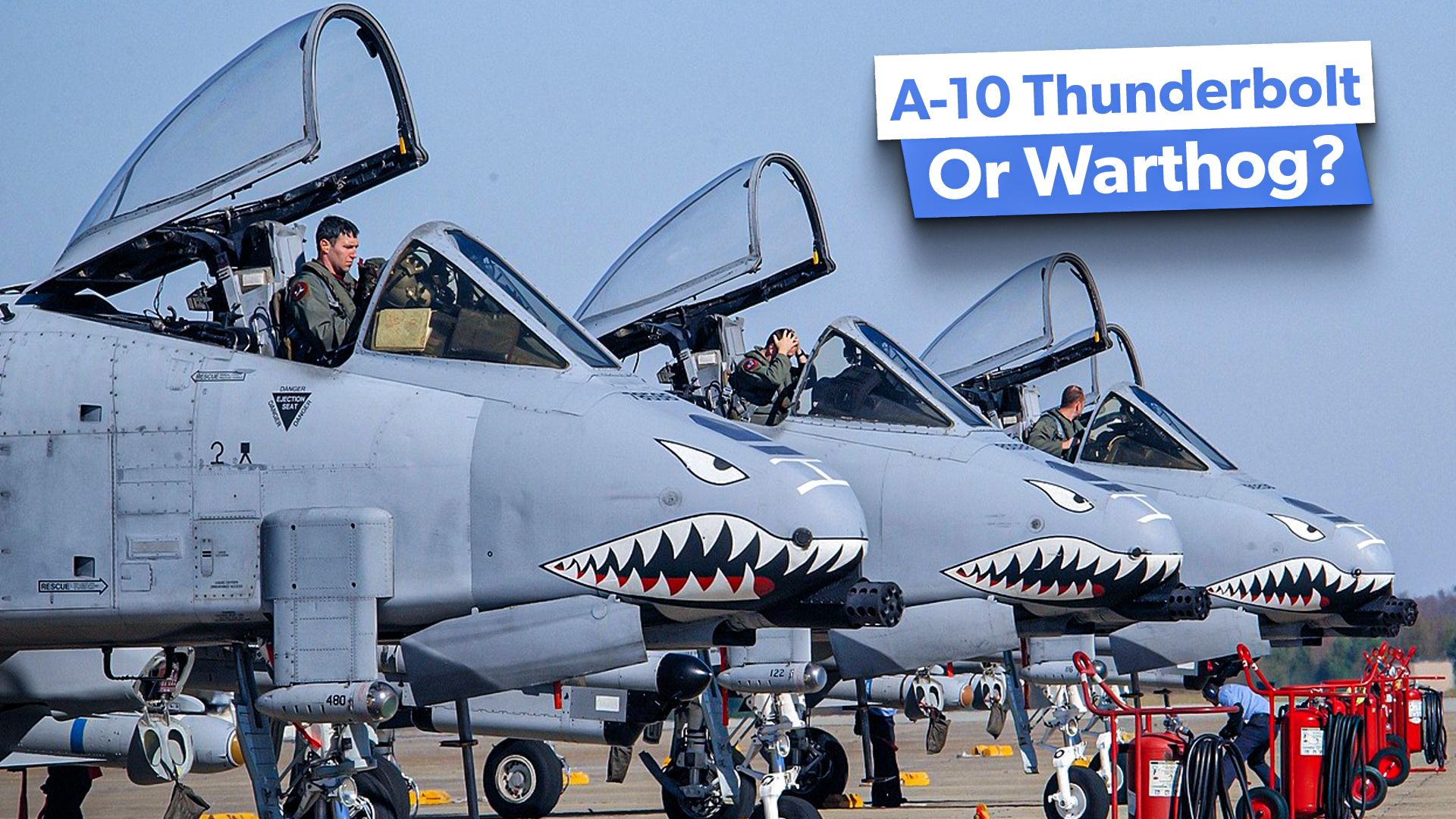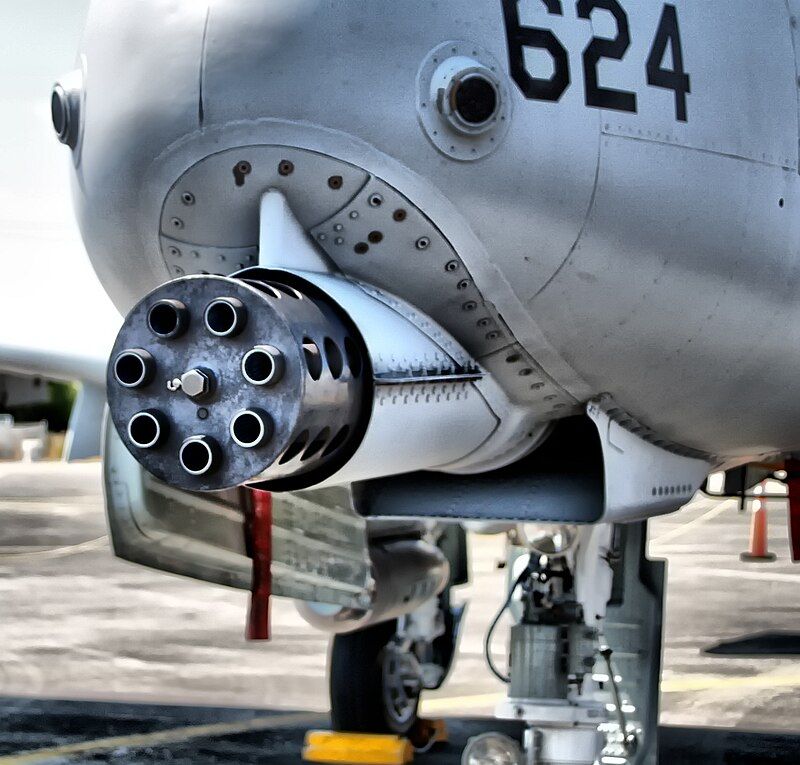Summary
- The A-10 Thunderbolt II is known as the “Warthog” due to its distinctive GAU-8 Avenger 30mm Gatling gun.
- Warthogs are omnivorous mammals with tusk defenses, while the A-10 warbird is equipped with offensive weaponry.
- The Warthog demonstrated its deadly effectiveness in Operation Desert Storm and Operation Iraqi Freedom.
The US Air Force’s fleet is replete with warbirds that have both an official moniker and an unofficial nickname that tends to resonate better with the men and women who fly and maintain them (and, in some cases, resonate better with the general public as well). Among them:
- The General Dynamics/Lockheed Martin F-16 Fighting Falcon, AKA the “Viper”
- The Rockwell B-1 Lancer, AKA the “Bone” (as in “B-One”)
- The Boeing B-52 Stratofortress, AKA the “BUFF” (“Big Ugly Fat F*cker”)
- And last but not least, our current subject, the Fairchild Republic A-10 Thunderbolt II, AKA (and much better known as) the “Warthog”
But beyond the oversimplified answer about the supposed “ugliness” of the plane, why exactly is the A-10 known as the “Warthog.” Simple Flying now takes a deeper dive into this arguably most famous of combat aircraft monikers.
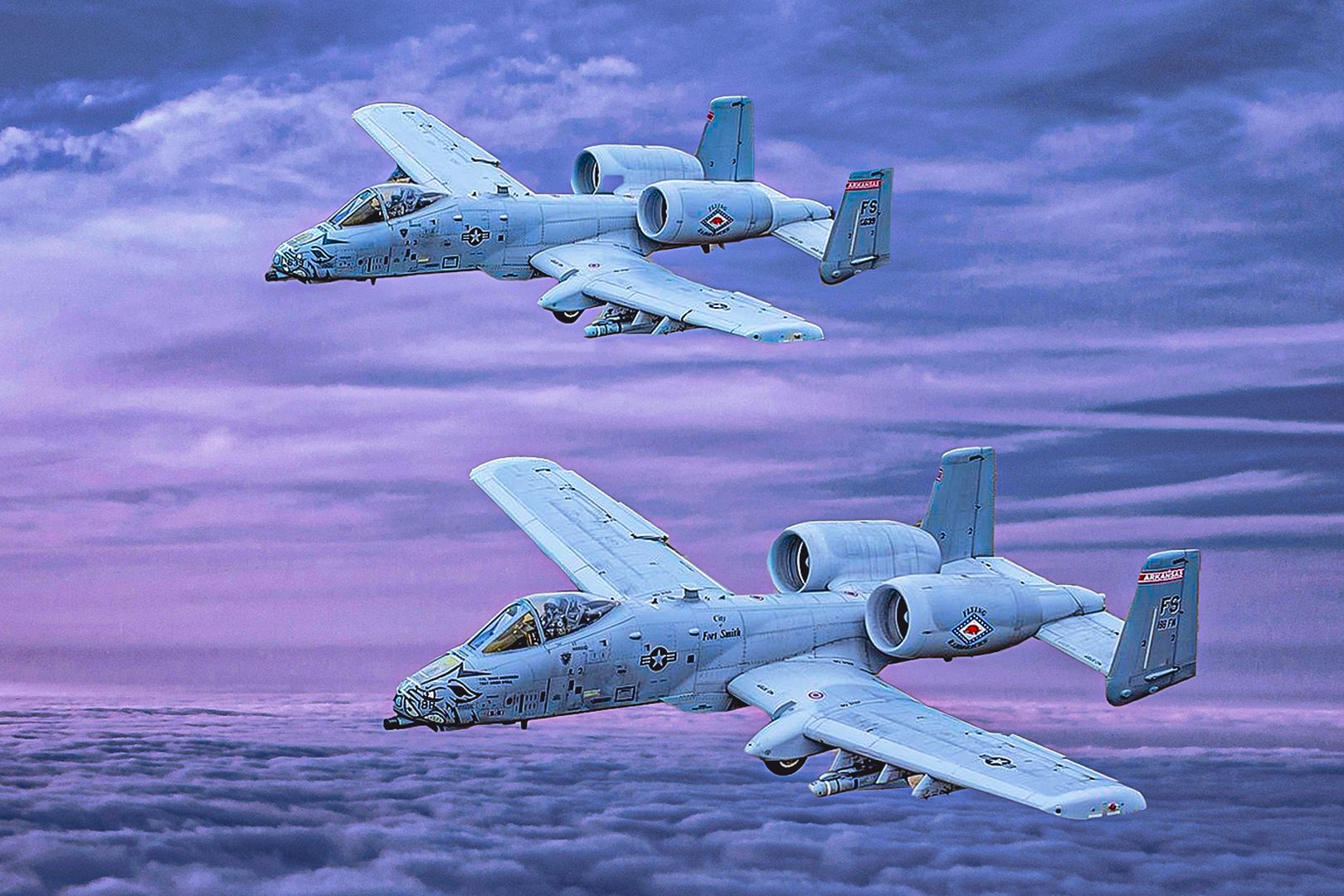
Related
Bye Bye A-10 Warthog: Why Does No One Produce Dedicated Ground Attack Airplanes?
Attack aircraft continue to be used in the war in Ukraine, but they are out of production and their days may be numbered.
The Warthog’s zoological namesake
The original warthog is a flesh-and-blood animal, namely wild pigs belonging to the family Suidae and the genus Phacochoerus. The “wart” half of the warthog name derives from the facial wattles that are quite distinct in the male members of the genus; the males also have very prominent tusks, with a length ranging from 10 to 25 inches (25 to 64 cm); females’ tusks are always smaller, According to Colby Maxwell of AZ Animals, there are two officially recognized species of warthog:
- The common warthog (Phacochoerus africanus), which lives in the savannas of sub-Saharan Africa; and
- The desert warthog (Phacochoerus aethiopicus), which lives exclusively around the Horn of Africa (HOA), mostly from southeastern Ethiopia through Somalia and south to Kenya
Warthogs are omnivorous; though they consume more plant matter than animal matter, their diet includes insects, eggs, and (on occasion) carrion. They can and do use those aforementioned tusks for self-defense against predators, especially when mama warthogs protect their piglets. Their primary method of self-preservation is speed, as they can sprint at speeds of up to 30 mph (48 km/h).
What’s in a name
“What’s in a name? That which we call a rose
By any other name would smell as sweet.”
—Juliet’s soliloquy in Shakespeare’s Romeo and Juliet, Act 2, Scene 2
So then, why was this particular animal’s name chosen for the unofficial nickname of the A-10 Thunderbolt II? After all, US Air Force combat aircraft from the 1970s onward have tended to be bestowed with predatory bird names, such as Eagle, Falcon, and Raptor. The A-10 indeed made its operational debut in October 1977. Moreover, “Thunderbolt” was already a proud namesake in USAF naming traditions. The original warbird bearing the name, namely the Republic P-47 Thunderbolt (AKA the “T-Bolt,” “Jug,” and “Flying Bathtub”), was a major contributor to the Allied victory in WWII, inflicting much destruction upon Nazi Germany and Imperial Japan alike.
Eli Shayotovich of SlashGear sheds light on the story behind the Warthog warbird name:
“One of the most recognizable features of the A-10 is the seven-barrel GAU-8 Avenger 30mm Gatling gun perched in its nosecone, which is capable of firing 3,900 rounds per minute. Interestingly, the plane was built around the weapon, not the other way around. In 1970, the Air Force issued a call for a 30mm rapid-fire cannon.”
“One year later, General Electric and Philco Ford created the GAU-8, which makes a very distinct ‘BRRRT!’ sound when it’s fired, and is the reason soldiers nicknamed it the Warthog. The gun itself is larger than a Volkswagen Bug and takes up 16% of the A-10’s total weight of 12 tons.”
Well, there you have it, folks.
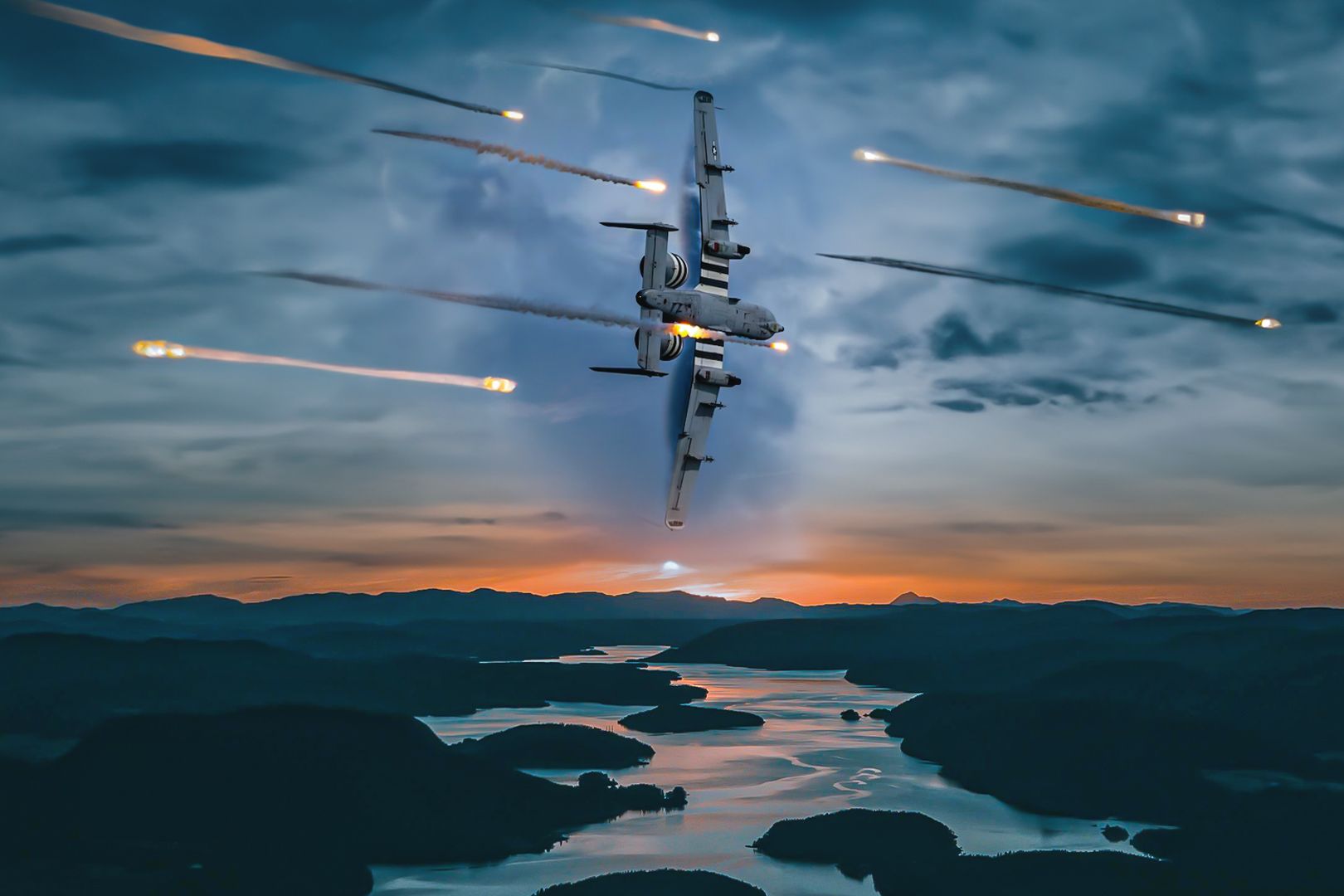
Related
What Missions Did The A-10 Warthog Perform For The US Military?
The Warthog has faithfully served for 47 years. We know look at some of the historic missions of the A-10.
Animal vs. airplane comparisons
And unlike the warthog mammal’s tusks, the Warthog warbird’s 30 mm gun and AGM-65 Maverick air-to-surface missiles are offensive instead of defensive. During Operation Desert Storm (the 1991 Persian Gulf War) alone, the A-10 was responsible for destroying over 900 tanks, 1,200 pieces of artillery, thousands of other ground vehicles, and even a few helicopters, all belonging to then-Iraqi dictator Saddam Hussein.
Twelve years later, when the United States finally finished the job against Saddam during Operation Iraqi Freedom (OIF), Warthogs inflicted more devastation upon Iraqi armor. Fast-forward to 2015, when I started my last Iraqi contract assignment at Balad Airbase, I got to see the aftereffects of the A-10 strafing runs, as shown in these pictures:
The mammal is considered quite fast by animal standards. As for the plane, though its max airspeed of 439 mph (706 km/h, 381 kn, Mach 0.57) obviously makes it much faster than the animal, it is super slow by modern aircraft standards.
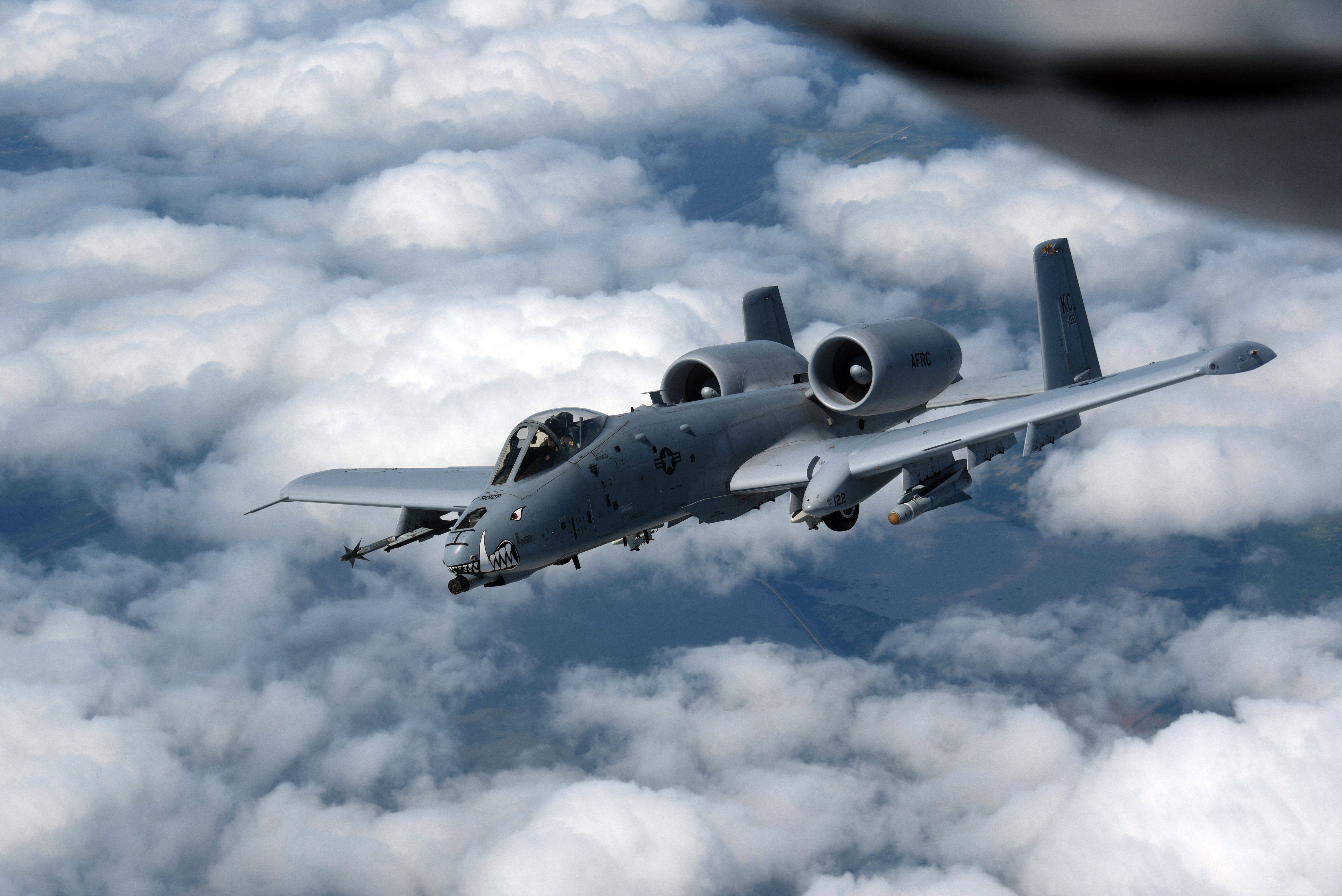
Related
Why Does The USAF Want To Retire The A-10 Warthog?
The US Air Force has firmed up plans to retire its A-10 ‘Warthog’ fleet by 2029. In a report by Defense News, Air Force Chief of Staff Gen. CQ Brown said Close Air Support was less of a requirement these days and that the low- and slow-flying aircraft wouldn’t survive in a war with an enemy such as China. Permission from Congress came after years of resistance and will see the A-10 removed from the fleet over the coming half-decade. The USAF will focus instead on multi-role aircraft like the F-35. I can agree, to some extent, that the A-10 is unsuitable for some modern warfare missions, but in other situations – developing countries, for example – it could be a strategic advantage to keep at least a small fleet. It’s tough, cost-effective, and can’t be matched in CAS. Eyebrows raise over the cost of maintenance, but surely a complex modern jet like the F-35 costs a fair bit to keep flying too? What do you think about the A-10 leaving the USAF? Share your thoughts below!

